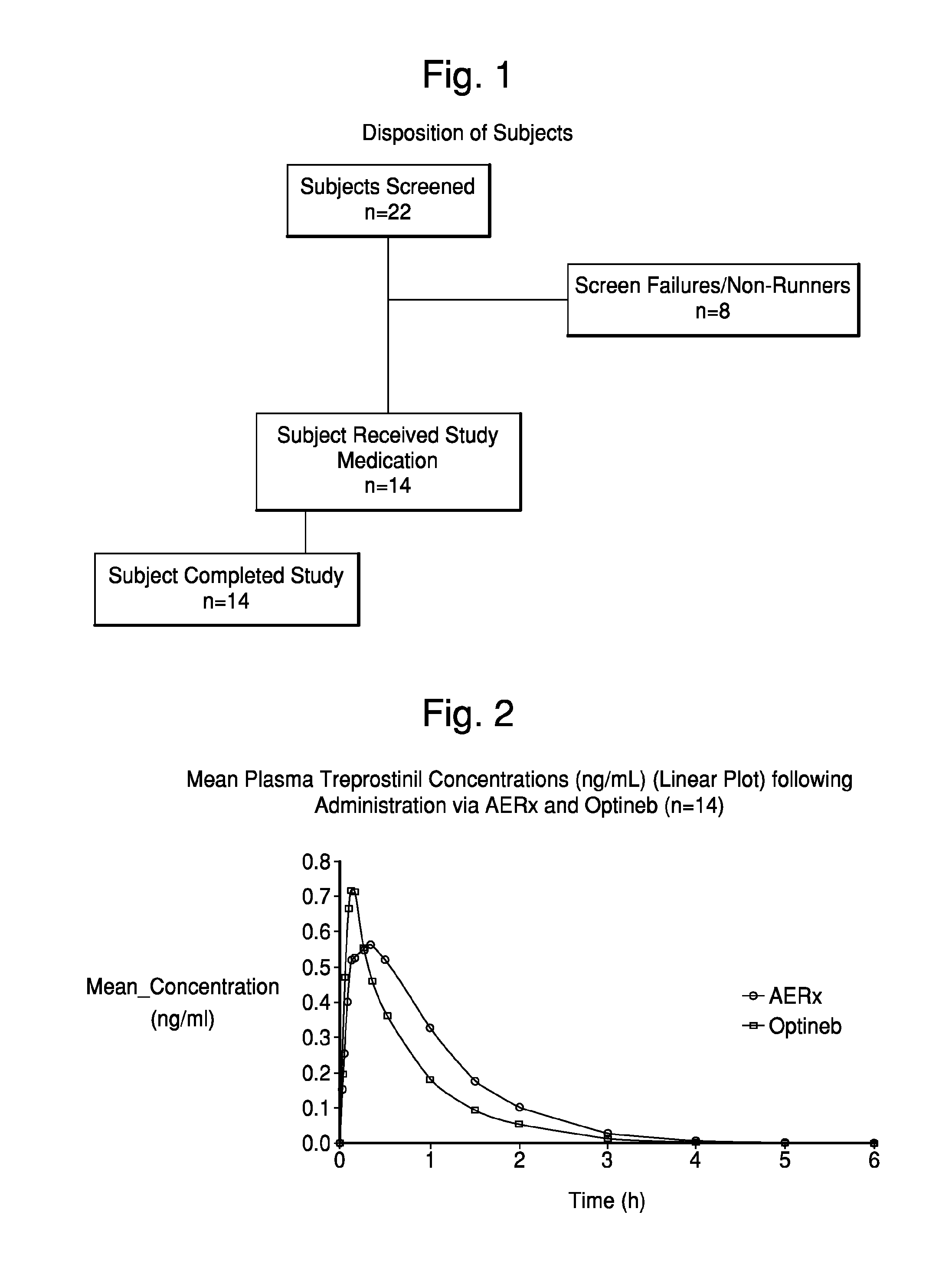Deep lung pulmonary delivery of treprostinil
a deep lung, pulmonary technology, applied in the direction of aerosol delivery, drug compositions, extracellular fluid disorder, etc., can solve the problems of inability to provide sustained release of drugs, inconvenient and/or painful, and too much drug may be made available too quickly, so as to improve the pulmonary selectivity of inhaled treprostinil, the effect of slowing down the onset of pulmonary vasodilator effects and improving the pulmonary selectivity
- Summary
- Abstract
- Description
- Claims
- Application Information
AI Technical Summary
Benefits of technology
Problems solved by technology
Method used
Image
Examples
example 1
9. Investigational Plan
9.1 Overall Study Design and Plan
[0076]This was an open label study conducted in a single-center, using a randomized, two-way crossover design. Sixteen healthy adult male subjects were to be enrolled to receive study treatments. Upon provision of written informed consent, each study candidate underwent a pre-study evaluation and screening to determine eligibility to participate.
[0077]Subjects received instruction and training in the proper use of the Nebu-Tec Optineb nebulizer and AERx Essence System using drug-free dosage forms.
[0078]On each of two dosing days, eligible subjects underwent dosing with 99mTc-labeled treprostinil sodium using either the AERx Essence System or the Nebu-Tec Optineb nebulizer. Following their initial study dose, subjects underwent a washout period of approximately 48 hours before completing a second (crossover) study dose.
[0079]Immediately following each study dose, subjects underwent gamma scintigraphy and multiple samplings of ve...
PUM
| Property | Measurement | Unit |
|---|---|---|
| Diameter | aaaaa | aaaaa |
| Diameter | aaaaa | aaaaa |
| Diameter | aaaaa | aaaaa |
Abstract
Description
Claims
Application Information
 Login to View More
Login to View More - R&D
- Intellectual Property
- Life Sciences
- Materials
- Tech Scout
- Unparalleled Data Quality
- Higher Quality Content
- 60% Fewer Hallucinations
Browse by: Latest US Patents, China's latest patents, Technical Efficacy Thesaurus, Application Domain, Technology Topic, Popular Technical Reports.
© 2025 PatSnap. All rights reserved.Legal|Privacy policy|Modern Slavery Act Transparency Statement|Sitemap|About US| Contact US: help@patsnap.com



